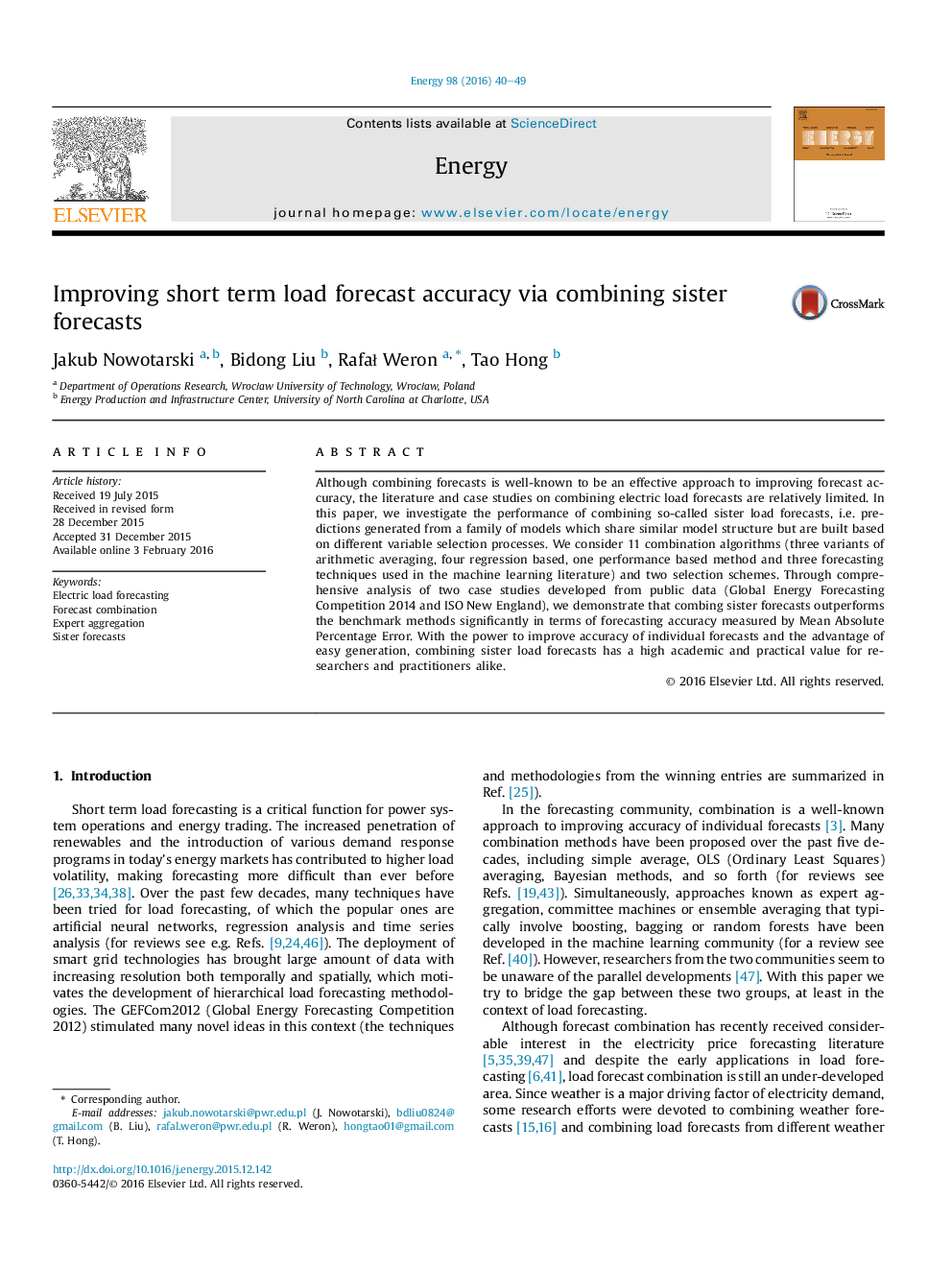| Article ID | Journal | Published Year | Pages | File Type |
|---|---|---|---|---|
| 1731357 | Energy | 2016 | 10 Pages |
•The first empirical study on combining sister forecasts in point load forecasting.•Easy to implement compared to combining independent expert forecasts.•11 combination and 2 selection schemes considered.•GEFCom2014 and ISO New England data used to make the work reproducible.
Although combining forecasts is well-known to be an effective approach to improving forecast accuracy, the literature and case studies on combining electric load forecasts are relatively limited. In this paper, we investigate the performance of combining so-called sister load forecasts, i.e. predictions generated from a family of models which share similar model structure but are built based on different variable selection processes. We consider 11 combination algorithms (three variants of arithmetic averaging, four regression based, one performance based method and three forecasting techniques used in the machine learning literature) and two selection schemes. Through comprehensive analysis of two case studies developed from public data (Global Energy Forecasting Competition 2014 and ISO New England), we demonstrate that combing sister forecasts outperforms the benchmark methods significantly in terms of forecasting accuracy measured by Mean Absolute Percentage Error. With the power to improve accuracy of individual forecasts and the advantage of easy generation, combining sister load forecasts has a high academic and practical value for researchers and practitioners alike.
